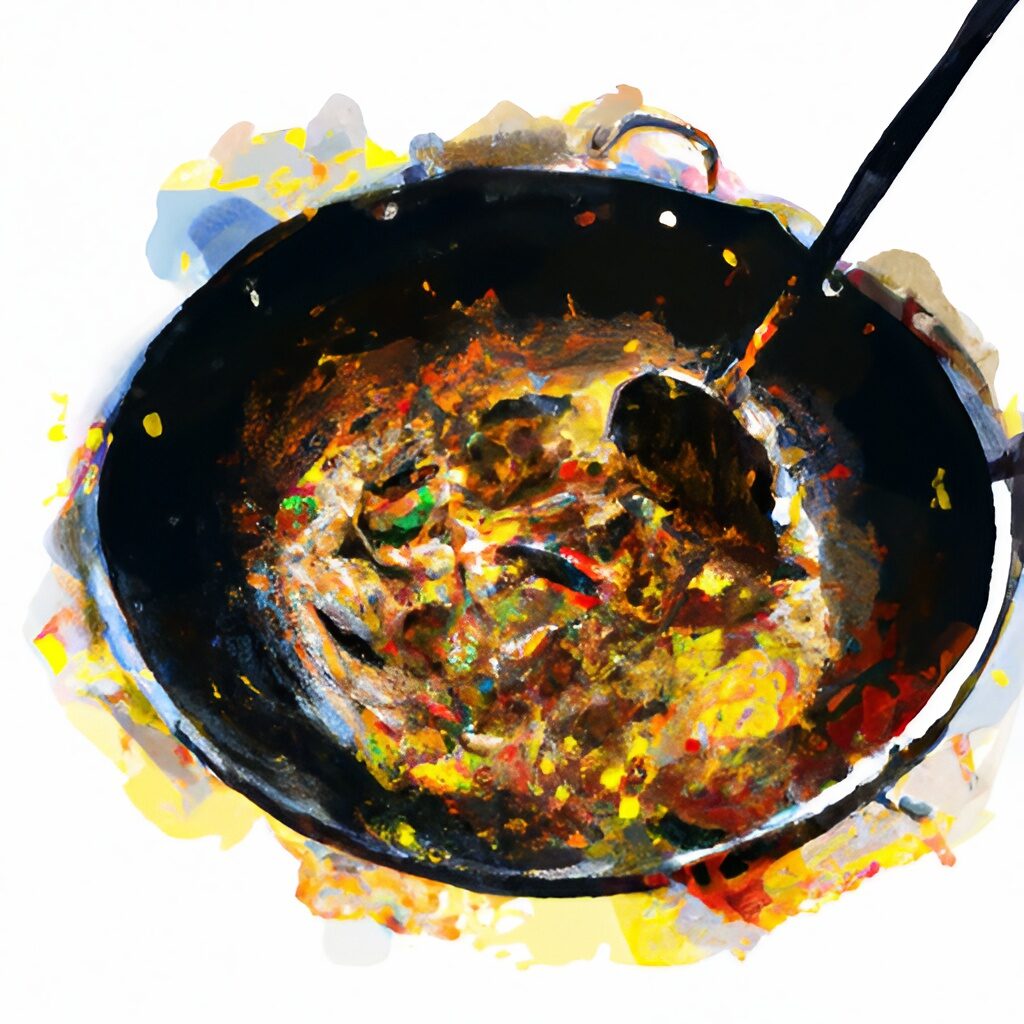
What is Tadka?
Tadka, also called chhonk, bagar, phodni, vagarne, oggarane and many other names, depending on where you are in India is an important part of Indian cooking. This process involves heating whole spices and sometimes other ingredients with oil or ghee, which allows for the extraction of aromas and flavors readily soluble in fat. The spices are then allowed to sizzle and release their flavors into the oil before being poured over the dish. Tadka is often used to finish dishes, such as dal or vegetable curries, just before serving.
Tadka’s ingredients are regionally-specific and tailored to personal taste, making each dish unique. The mix of flavors uses a variety of local spices to enhance the flavor. For instance, cumin is more popular in the north, while curry leaves are found aplenty in the south. Some common spices include mustard seeds, semillas de comino, fennel seeds, ginger, garlic onion, and asafoetida.
Tadka adds depth and complexity to the flavors of its dishes while remaining simple enough for anyone to incorporate into their recipe by adding oil or ghee, the dishes become richer and more satisfying, especially for those that are lean. Whole and ground spices, fresh and dried chiles, curry leaves, ginger, garlic, and onions provide vivid flavor, heat, and depth to the dishes. The whole spices also release pungent aromas that fill the kitchen and deliciously perfume the food. Furthermore, they add visual and textural character to the dishes, making them even more appealing.
How to use tadka?
Traditionally, tadka is added towards the end of cooking. It will bring out the flavors of the spices and infuse the dish with a rich aroma. To use tadka ou pour the tadka over the dish you wish to flavor, such as dal or curry.
Tadka Ingredients
To make tadka, you will need the following ingredients:
- Whole, dried spices, seeds, and small beans (such as coriander, cumin, fennel, fenugreek, nigella, or sesame seeds, semillas de mostaza, green and black cardamom pods, canela, cúrcuma, lentils and some beans, and asafetida)
- Fresh ingredients (such as onions and shallots, ginger, and garlic)
- Oil (such as vegetable, mustard, or ghee)
How to make tadka
Every tadka is different, but here is a guide to making it. Other cooks might do it differently, but this is the general process:
- Prepare all the ingredients needed for the tadka, such as spices, ghee, or oil, and other ingredients like garlic, onions, etc.
- Take a pan and heat it on high heat. Once the pan is hot, add ghee or oil and wait until it becomes hot.
- Reduce the heat to medium and add the whole spices, like cumin seeds, semillas de mostaza, and dry red chili.
- Once the whole spices crackle, add the chopped garlic, ginger, and onions. Cook them until they turn translucent.
- Add ground spices, like turmeric powder, cumin powder, cilantro en polvo, and red chili powder. Cook for a few seconds until they release their aroma.
- Finally, add the diced tomatoes, and cook until they soften and release their juice.
- Turn off the heat and add other ingredients like curry leaves, fresh cilantro, or green chilies.
- Your tadka is now ready to be added to the final dish or served on its own.
It usually takes a minute for the spices in a tadka to brown, sizzle, and release their fragrance. Use your senses, especially sight, sound, and smell, to assess a tadka’s development. I prefer using sound and visual cues as guides rather than relying solely on exact time or temperature measurements.
When your Whole spices have completely imparted their flavor, they will take on a light toffee brown hue and softly sizzle. Be sure not to overcook them as this may result in an unpleasant bitter taste. The Curry leaves should be cooked until crisp yet translucent for the best results.
Tadka Tips
- Be prepared by having all other ingredients or the final dish ready for the tadka – what the French call mise en place.
- It’s important to use a small pan and not to overcook the ingredients. Otherwise, the spices may lose their flavor and aroma.
- The ghee or oil should be very hot at first. Then reduce the heat to medium. Once that is done, add the spices. No water should be added to a tadka.
- Add spices in the following order: Ingredients requiring longer cooking first (e.g. whole cumin seeds). Ingredients requiring less cooking later (e.g. chopped garlic)
- The tadka is ready to be added to your dish when the spices begin to crackle or change color. This typically takes only seconds, so be prepared to move quickly.